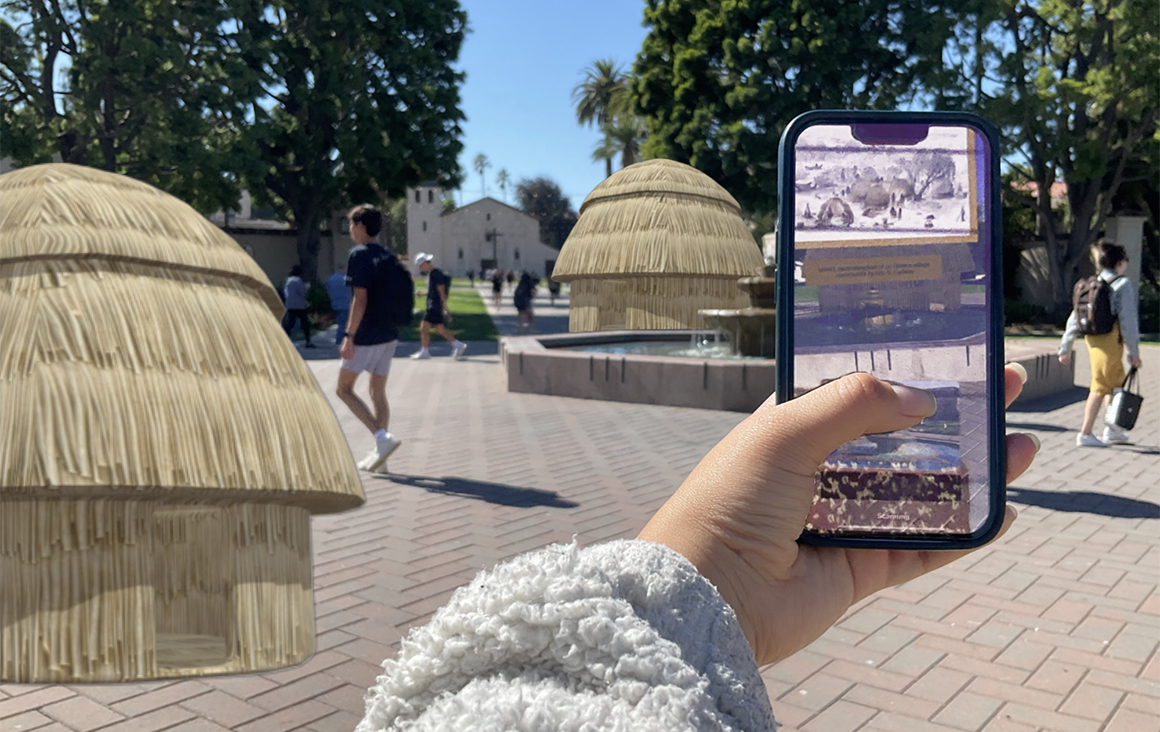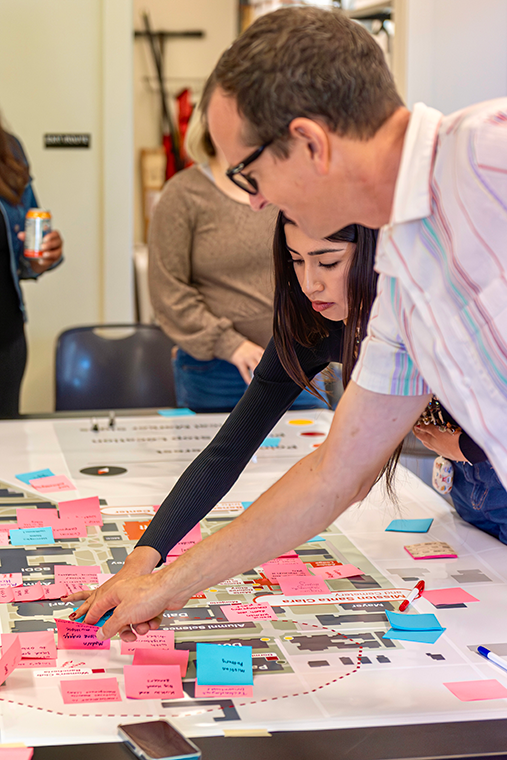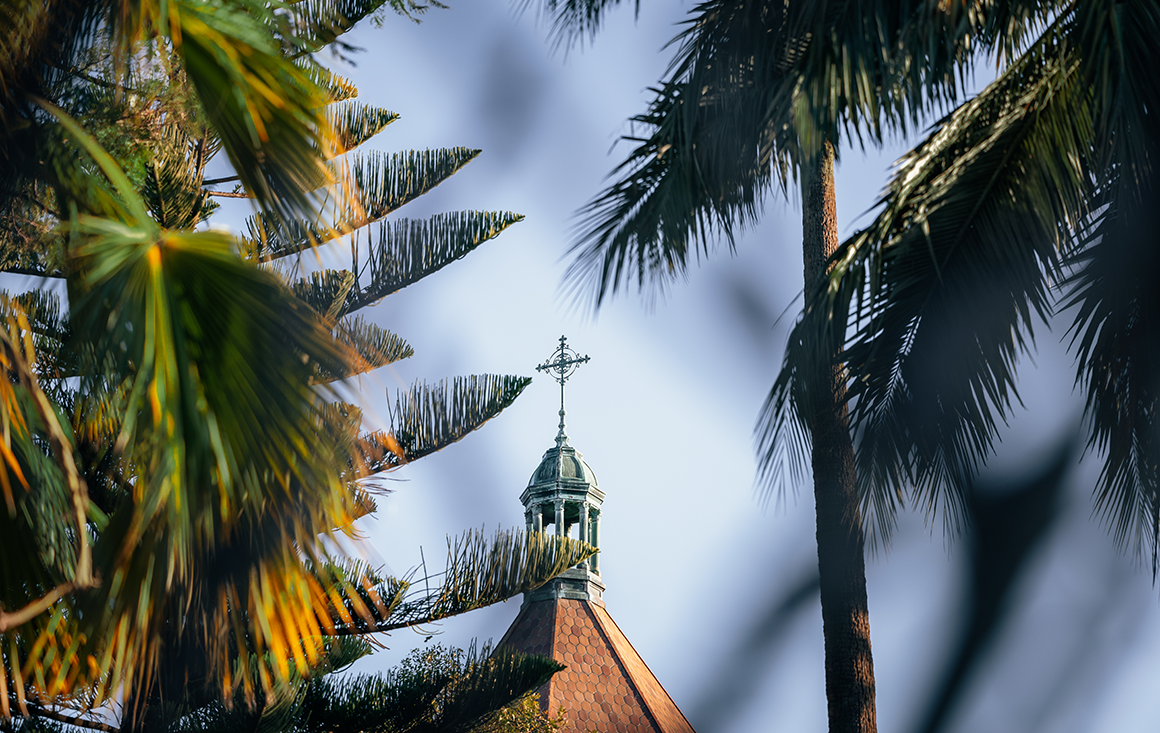Revealing an Unseen History

Lee Panich isn’t worried about being replaced by technology. In fact, that’s kind of the point.
For years, the anthropology professor has been leading walking tours focused on the Muwekma Ohlone tribal history that exists all around campus, including sites where Ohlone dwellings once stood and the Rose Garden cemetery where many Indigenous people who lived at Mission Santa Clara were buried.
However, Panich is just one person, and there was a limit to how many people he could give tours to.
So, during the COVID-19 lockdown period, the tour went virtual. Thanks to Google Earth, people around the world could remotely access this lesser-known history of our campus, with the tour connecting multimedia materials to relevant campus locations—like portraits and biographies of well-known Ohlone elders and photos of Ohlone artifacts that have been uncovered around campus. The only problem was that when visitors returned to campus, they couldn’t actually explore these deeper stories because the Google Earth tour wasn’t accessible on mobile devices.
That is, until now.
In 2022, Panich and a team of faculty, students, and Muwekma Ohlone representatives began adapting that Google Earth tour into a more comprehensive augmented reality (AR) experience that will allow the thousands of people who visit SCU every year to explore Indigenous stories around our campus in real-time, directly on their phones. The GPS-driven AR tour is planned to highlight roughly 20 stops.
“As an archeologist, I’m often troubled by the colonial history of my field where cultural artifacts can be placed on museum shelves without context, but with new AR technology, we can engage with heritage in so many new and different ways,” says Panich. “For us, it’s been about following the lead of the Muwekma Ohlone community in how they’d like their stories to be told.”
Funded by a Whitham Family Collaborative Scholarship, the project brought together students and faculty across departments—including anthropology, computer science and engineering, philosophy, communications, and art—and utilized the cutting-edge resources available in SCU’s Imaginarium, Community Heritage Lab, and Human-Computer Interaction Lab. A beta version of the AR tour was launched in October featuring the first three stops of the tour.

Panich and Isabella Gomez '27, Santa Clara's inaugural Muwekma Ohlone Scholarship recipient, planning several stops of the AR tour at a workshop earlier this year.
“Because Indigenous stories are so strongly connected to land and physical locations, with each stop, we were really intentional about why a story should be told in a specific location,” says Kai Lukoff, an assistant professor in computer science and engineering.
For example, in the AR tour, visitors to campus are immediately met with a Muwekma Ohlone village of tule houses digitally rendered around the fountain on Palm Drive. Then, to memorialize the 7,612 Indigenous people who died at Mission Santa Clara, many of their names are projected in the sky above the Mission Church that stands here today.
“That’s what’s so powerful about AR,” adds Lukoff. “It’s a great vehicle for meaningful stories because it doesn’t disconnect you from the physical world in the same way as other immersive technologies, like virtual reality, might. This project is a perfect combination of great technology and meaningful stories that need to be told.”
But this tour is not just telling stories about the past—it also highlights how the Muwekma Ohlone Tribe and other Indigenous groups are involved on this land today. The tour currently includes photos from recent SCU powwows, and will later integrate contemporary cultural demonstrations.
“Right now, we’re talking about flying to Washington D.C. to make a digital model of an Ohlone basket that’s in the Smithsonian,” explains Panich. “Then, we’ll commission a similar basket from a local Muwekma Ohlone artist and film her making it to be part of this AR tour, to really show that these are living traditions.”
Another exciting part of AR technology is that it offers a chance to re-envision what SCU’s campus might look like in the future. The team has explored the idea of using AR to create new commemorative markers around campus, perhaps adding a virtual statue of Ohlone dancers where the controversial Junípero Serra statue once stood, or using motion capture to show these dancers in action.
“I think it’s so powerful to showcase Indigenous stories, culture, and traditions in this capacity as Indigenous people don’t just exist in the past—they are in the here and now, co-designing these novel and immersive technological experiences,” says Lukoff, who says tribal members as young as 12 have participated in designing the project.
As the team works to secure its next round of funding, Panich says there are many opportunities for students across every discipline to become involved, from creating 3D models of archeological objects to designing animations.
The team hopes to release more stops by February 2024, with the goal of launching the AR tour to the public in May 2024.
Learn more about Ohlone people, heritage, and the history of Thámien, the Ohlone village located at what is now the site of Santa Clara University.


